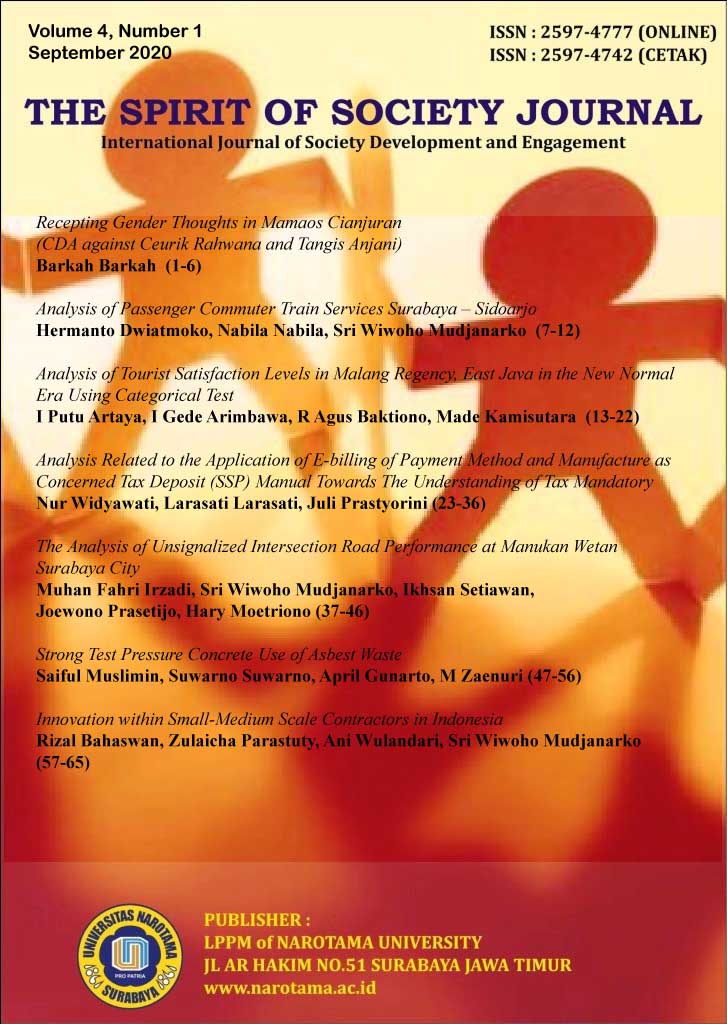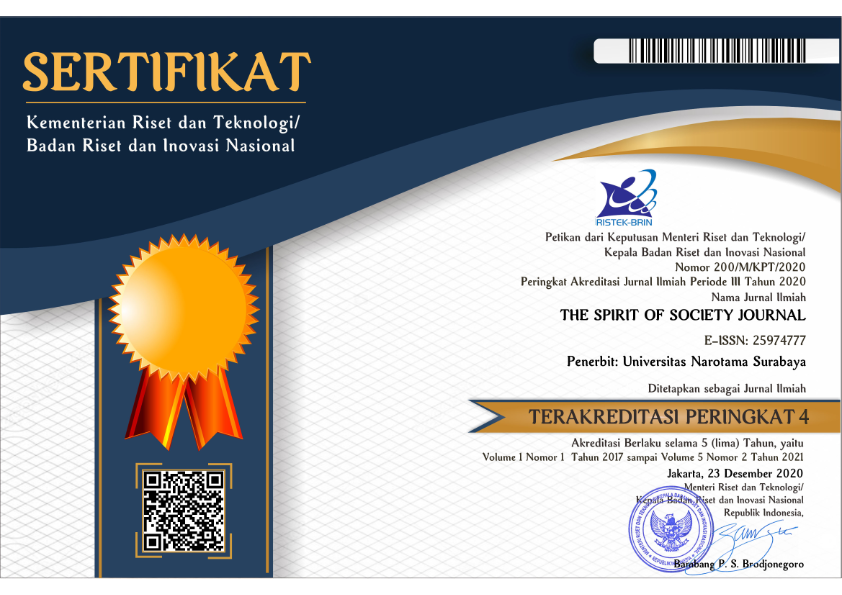Analysis of Tourist Satisfaction Levels in Malang Regency, East Java in the New Normal Era Using Categorical Test
Abstract
In an effort to increase tourist visits in the new normal era to the city of Malang, East Java, the local government and the central government have made many efforts in carrying out eco-tourism activities whose main objective is to increase the number of tourist visits and the level of tourist satisfaction and local revenue in Malang Regency, East Java. Due to the increasing number of tourist visits to the city of Malang, it is necessary to make improvements in eco-tourism activities with the aim of increasing the trust and satisfaction levels of tourists who come there. Several improvements that are feasible to do so that the flow of tourist visits is getting better from year to year, are: providing lodging facilities in accordance with tourist expectations, increasing the number of tourist attraction activities, providing shopping center facilities, availability of a culinary center, organizing important events, access roads to tourist attractions, and environmental improvements in the tourist area. These seven important aspects are imperative in an effort to provide better overall service to tourists, considering the tourists who come to Malang, some come from outside the province. The data processing method used in this research is categorical test, where this test tool aims to find a map in the form of a quadrant that displays the position of tourist attractions in the city of Malang to make improvements and improvements to increase visitor satisfaction. From the results shown based on the categorical test, there are two main tourist attractions that are priority development, that is Batu Secret Zoo and Batu Night Spectacular
Downloads
References
Beerli A. Martin JD. 2014, Factors Influencing Destination Image. Ann. Tour. Res. 31(4). 657-681
Bories Y. A., Akhmad. Hamid, Djamhur. Topowijono. et. al. 2016. Dampak Pengembangan Pariwisata Terhadap Kehidupan Masyarakat Lokal Dikawasan Wisata. Jurnal Administrasi Bisnis. Vol.30 No. 1. pp. 69-78.
Brady, M.K. and Robertson, C.J. 2011. Searching for Consensus on The Antecedent Role of Service Quality and Satisfaction: Exploratory Crossnational Study. Journal Business Research. Vol. 51. pp. 53-60.
Kusuma, Barry. 2012. 15 Destinasi Wisata Terbaik Di Indonesia. Jakarta: PT. Elex Media Komputindo.
Malang Times. 2018. Pariwisata Kabupaten Malang Booming, Kompetensi Pemandu Wisata Terus Ditingkatkan. From https : // www. malangtimes. com/ baca / 27443/ 20180511/ 162331/ pariwisata- kabupaten- malang- booming- kompetensi-pemandu- wisata- terus- ditingkatkan/.
Paludi, Salman. 2017. Kepuasan Wisatawan. From http: //bab234.blogspot.com/2017/02/ kepuasan-wisatawan.html.
Prasiasa, Dewa Putu Oka. 2012. Destinasi Pariwisata. Jakarta: Salemba Humanika.
Santoso, Singgih. 2014. Statistik Non Parametrik. Jakarta: PT. Elex Media Komputindo.
Sugiyono, 2011. Metode Penelitian Kuantitatif, Kualitatif, dan R&D. Bandung: Alfabeta.
Suwena, I Ketut. Widyatmaja, I Gusti Ngurah. 2017. Pengetahuan Dasar Ilmu Pariwisata. Denpasar: Pustaka Larasan.
Copyright (c) 2020 THE SPIRIT OF SOCIETY JOURNAL

This work is licensed under a Creative Commons Attribution-ShareAlike 4.0 International License.












